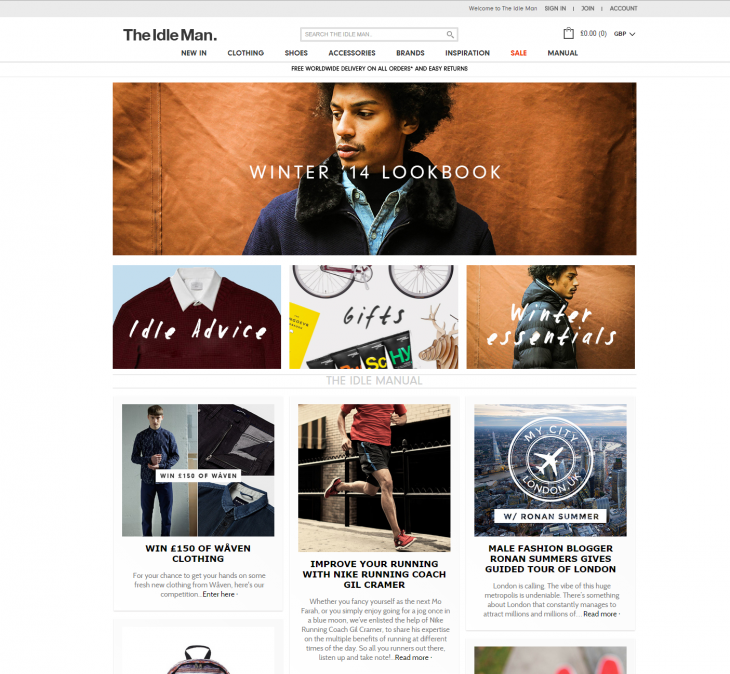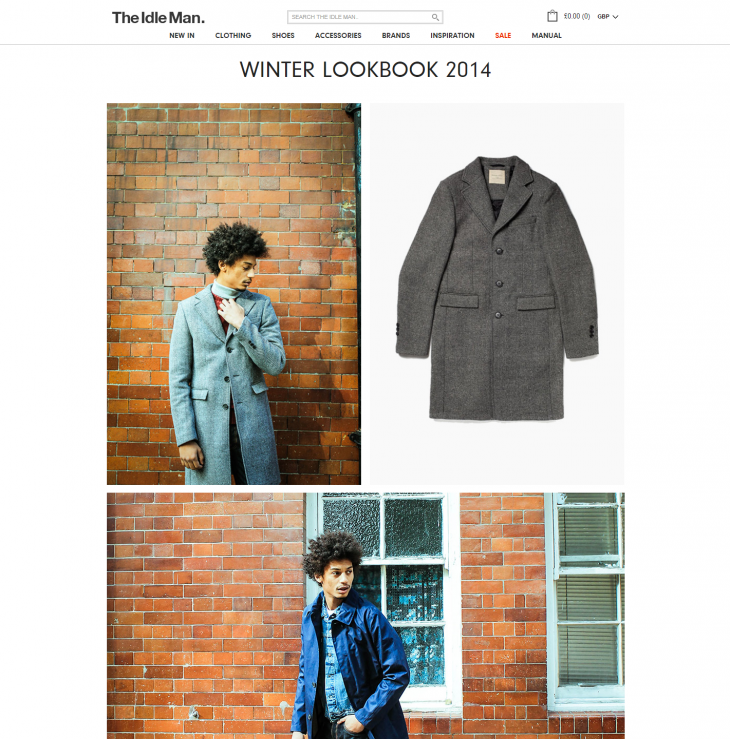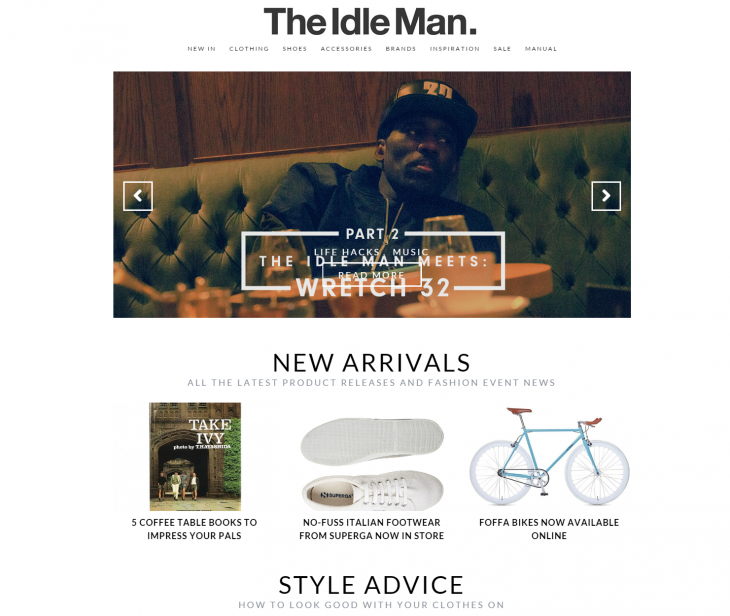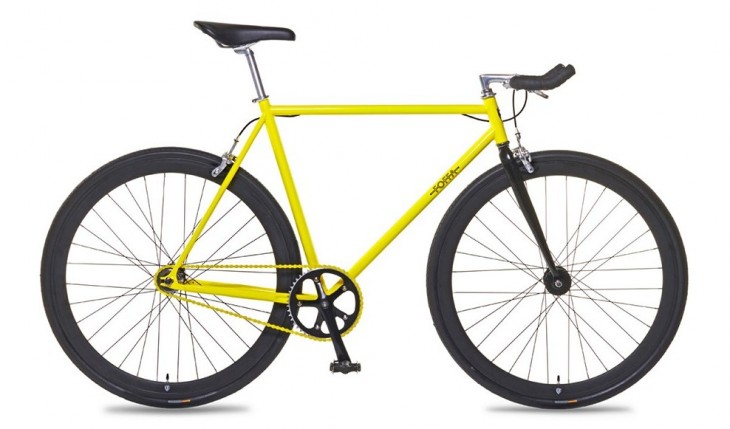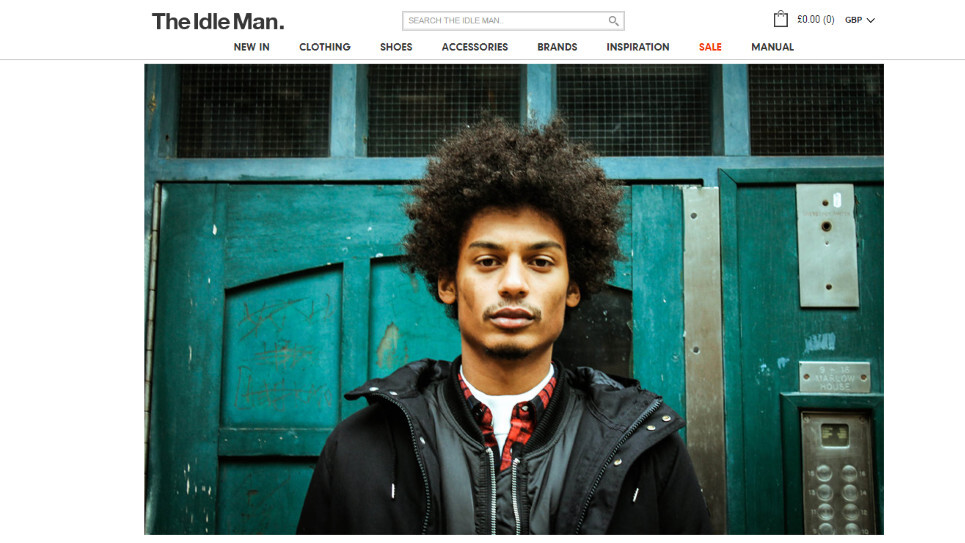
If someone was to ask you where you bought most of your clothes, you might list the usual high-street chains, and you might reel-off a few online favorites like Asos. But if you’re a man, it’s pretty likely that you’re not really using a service that’s geared for you.
In the nineties and early noughties, ‘lads mags’ like Loaded or FHM tended to cover men’s fashion, but the coverage came as a forerunner to general appetite for style-conciousness among the UK’s male population. Now it seems the population has caught up, however, and there’s a demographic of 18 – 35-year-olds that care deeply about how they look, even if they’d rather not say that aloud. Fashion retailers haven’t gotten the message though, according to Oliver Tezcan, CEO of East London-based fashion retail platform The Idle Man.
“The way men shop certainly is changing. When I first started out in fashion, men were very, very brand loyal – it was about having the safety of a brand name. When I first started out, as long as you had Super Dry and Diesel you were okay, because men like Super Dry and Diesel and they’re not going to have the piss taken out of them by their friends in the pub. That’s moved towards being less about the brand loyalties and more about the overall look,” Tezcan explains.
Upon realizing that the existing online (and offline) retailers were failing to adapt to the growing interest in fashion from men, he decided to set-up shop on his own. It probably helped that his former position was as the head of menswear for Asos and to illustrate the growth in this specific market, when he started at Asos there was no menswear department.
“The online e-commerce/fashion space is a really crowded market, but it’s crowded predominantly with womenswear retailers, and some of them offer menswear as an afterthought. And then there are a lot of traditional brick-and-mortar retailers, whose store operation is their primary [business] and then online is just an extra revenue stream,” Tezcan says. “The thing that surprised me is that no one had really taken menswear and decided to refocus the story.”
Of course, it’s not that no other companies are looking at menswear – Mr Porter most certainly is. But Tezcan said that The Idle Man’s target customer is very different to Mr Porter’s.
“Mr. Porter is super-luxury, very, very high price point; age group of around 35-plus, that sort of thing. Beneath that, the 18-34 male consumer, is catered to by companies like Asos, Urban Outfitters, Top Shop/Top Man; they all do the same thing, they’re all womenswear retailers that do menswear as an add-on.”
So, The Idle Man’s master plan is to pitch affordable menswear directly at consumers, but this isn’t an aggregator or affiliate play – the margins there require you to move such a huge volume of stock that it’s barely worthwhile unless you’re one of the top three companies.
What this means is that, quite unusually for an East London startup nowadays, The Idle Man has a warehouse of stock – actual physical products that it ships directly to customers. On the downside, what this means is the company has the same overhead traditional retailers suffer, albeit without the associated costs of bricks-and-mortar.
The company itself was only formed in January this year, and it soft launched in May with a Spring/Summer collection. This early launch was pretty much just a test of the site and back-end operations ahead of its formal launch in September with a full Autumn/Winter collection.
But what makes The Idle Man think it will succeed where others aren’t even really bothering to focus?
“Men don’t want choice, men want to make the right choice. Asos’ business model is ‘look, here’s 60,000 items of clothing’, they have everything in the world’ …to women that is mana from heaven, they love it… that is how Asos and others have taken their approach to menswear.” Tezcan says. “What men actually want is to find what they want quicker.”
For example, the company spends a lot of time deliberating over what goes onto the homepage – what the items are, what the calls-to-action are, what the editorial spin is going to be, but Tezcan said that less than five percent of clicks from the homepage lead to any of that content. Instead, men go straight to the menu bars at the top of the page that lead directly to the clothes they want.
“It’s a very different approach. Women shop through the experience and men shop through being guided to what they’re looking for – there’s less browsing and more direction,” Tezcan explains. “Men really like, though they might not like to admit it, being told what to wear.”
Tezcan says that digital sales are the perfect avenue for delivering this sort of guidance and advice to regular joes in a way that they might actually accept – a sort of natural successor to the role played by the lads mags of yesteryear.
“There are so many blogs, there’s so much editorial stuff out there all going after this luxurious high-end fashion. The job that used to be done by FHM and GQ when they had big circulations – and it’s not really done anywhere any more. Digital is the obvious place to do it. There’s a gap in the market for the whole store-lifestyle [site].”
Loyalty or pure digital scale?
So, if you’re a fashion retailer looking to sell your wares against the biggest players in the market, are you looking for dedicated repeat business, or to scale as quickly as possible?
“We’re looking for loyalty. Zolando is the perfect counterpoint; Zolando is not a brand, it’s a platform for delivering clothing, that’s all it is. We’d like to think we’ve got more of an emotional engagement than that. If we try and compete with Zolando or Asos or Amazon on scale we’re just going to get murdered. So loyalty is really important to us,” Tezcan says.
There’s a better reason than that though; according to Tezcan, men are fiercely loyal once you’ve got them hooked. Marketing director of The Idle Man Alex Outlaw added that conversion rates of returning customers are four-times higher than that of a new customer. At the moment, just a few months after launch, the company is showing around 80 percent month-on-month growth, so it’s clearly striking some kind of chord, provided it can be sustained.
With fashion nous clearly covered off by Tezcan’s background at Asos, it was the tech side of things that proved the trickiest for the company in the first few months. It now has a CTO overseeing these matters which has helped greatly, Outlaw explained.
Having someone with specialist experience also allows The Idle Man to implement things like Facebook tracking pixels and other marketing and conversion strategies, as well as freeing up time to interact more with customers. The company is also working on building out the personal stylist feature.
The company has no intention of implementing any sort of virtual fitting room or other augmented reality technology though. “The big problem is that in fashion very few items get reproduced exactly as they are,” Outlaw says.
What that means is that each time a design is tweaked – even the tiniest bit -it would need to be changed for whatever technology was being used to provide the augmented experience on the platform. Then, of course, do men really want that sort of functionality if all they really want to do is find what they’re looking for quickly and get out again?
“There are thousands of different apps and things for dressing, and the audience on those is nearly 90 percent female and there’s no indication that guys [want this],” Outlaw adds.
Beyond clothing…
Ultimately, if The Idle Man is looking to replace the men’s lifestyle elements of magazines like GQ, it’ll need to offer more than just clothing. As its first steps in this direction, its trying out a tie-up with Foffa bikes to offer a few models through its platform and is adding a few more lifestyle elements to its ranges.
So if you want the Hip Hop Family Tree or the Supreme: Downtown New York Skate Culture coffee table books, they’re now available. It’s highlighting these new additions through cross-promoted editorial content – in this case, 5 Coffee Table Books To Impress Your Pals.
“We’re doing gifts, lifestyle products… It’s the lifestyle element we want to build… We’re doing some men’s grooming products. For next year we’re doing some The North Face – that whole lifestyle element,” Tezcan says. “We’ll never do football boots or tennis rackets, but we’ll do clothing and accessories around an active lifestyle alongside core fashion. It’s all merging into one now.”
Whether or not the fledgling company can see through the big ambition is another question, but in February it raised a “small seed round,” which was followed by another undisclosed sum in August, so there’s cash in the coffers to give it a shot. Overheads are also still reasonably low – in total, there are currently just 14 staff.
And by this time next year, where does The Idle Man see itself?
“We would have liked to have launched in more countries – US, France and Germany are the big three. We would have liked to have launched our own-label range – we have elements of own-label on the site now but they’re core basics, it’s not a fully-fledged range yet. And really, to build our team out, to build our premises and structure out,” Tezcan says.
Get the TNW newsletter
Get the most important tech news in your inbox each week.
